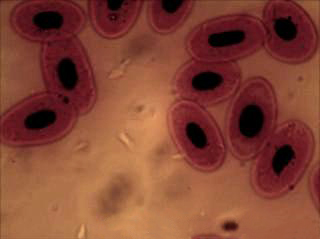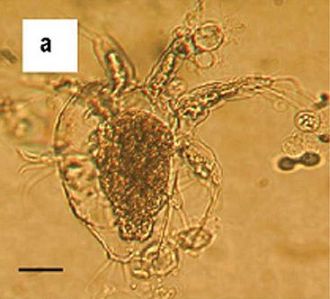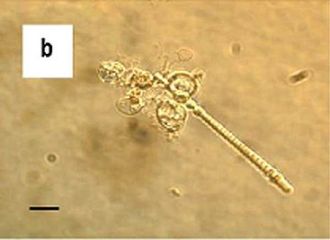Nutrition
Atelopus zeteki is relatively typical in comparison to
most other frogs and toads when it comes to nutrition. It is a
heterotrophic organism that prefers to eat small insects and other
invertebrates when found in its natural habitat. Because most
of the population is now in captivity, they are primarily fed
crickets and fruit flies by zookeepers.
Once the frogs have consumed their food, the nutrients have to be transported throughout their body; they do this through their circulatory system. The Panamanian Golden Frog is within the phylum chordata meaning it has a closed circulatory system as opposed to an open circulatory system. A closed circulatory system contains blood (hemoglobin) that travels through a system of vessels comprised of arteries, veins, and capillaries. The blood is responsible for carrying the nutrients to all the parts of the body once the stomach has broken down the material. Closed circulatory systems can be found in many organisms, including Ursus maritimus, also known as the Polar Bear. Below is an image of frog blood (left) and a closed circulatory system (right).
The Panamanian Golden Frog is believed to be a host to toxin-producing bacteria. Although this is not confirmed, scientists believe this to be the case because of the toxin that the Panamanian Golden Frog secretes. As mentioned earlier, the frog's toxin is a saxitoxin-analog which is quite unusual. Bacteria have been known to produce saxitoxin, thus, it is believed that these bacteria are associated with the frog. Meanwhile, the bacteria are able to thrive nutritionally within the frog. Atelopus zeteki also serves as a host to Batrachochytrium dendrobatidis which is the chytrid fungus. The fungus inhabits the dermal layer of the frog and causes death by suffocation. Below is a microscopic image of the sporangia of Batrachochytrium dendrobatidis (a) on an arthropod and (b) on algae.
Note: All images used under public permission.
To continue on to the Panamanian Golden Frog's reproduction, click here.
Are you lost? Go back HOME.



